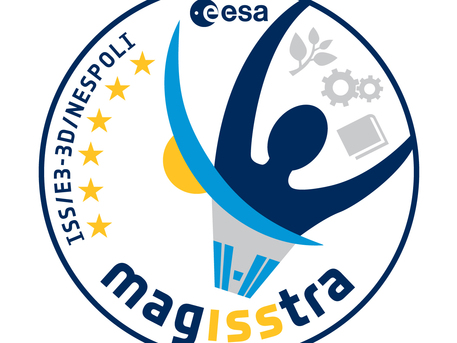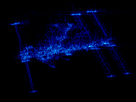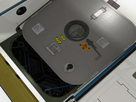MagISStra
Why MagISStra?
 © ESA |
ESA astronaut Paolo Nespoli (IT) is assigned to fly on Soyuz TMA-20 to the ISS, scheduled for December 2010, as part of the Expedition 26 crew. Expedition 27 begins with the Soyuz TMA-01M undocking in March 2011. Nespoli and his two crewmates, Roscosmos cosmonaut Dmitri Kondratyev and NASA astronaut Catherine Coleman, remain on the ISS and are joined by three new crewmembers, Andrei Borisenko, Alexander Samokutyayev and NASA's Ronald Garan (NASA), who arrive shortly after the TMA-01M undocking on TMA-21 in March 2011. Nespoli and his crew remain on the ISS as part of the Expedition 27 crew until May/June 2011, returning their TMA-20 spacecraft.
The Latin-flavoured name combines the word magistra, the female teacher, with the acronym of the International Space Station, continuing ESA’s tradition of having ISS within the mission name.
MagISStra also echoes the humanistic value of the mission, because it reflects the special link with education. It is one of the three dimensions of the flight, together with science and technology.
The mission logo features a human being, who can be seen as the Paolo himself, projected from the ISS. The value of the mission to Earth is symbolised by three icons between the arms: the plant denoting scientific research, the gears for technology, and the book as knowledge.
The six stars represent the six crewmembers living on the Station during the mission and the six months that Paolo will stay in space, as well as the idea of Europe.
Science-driven mission
Paolo Nespoli and his crewmates today visited the control centre for Europe’s Columbus laboratory module, in Oberpfaffenhofen, Germany.Scientific research will be one of his main activities during MagISStra. More than 30 experiments await him, covering human research, fluid physics, radiation, biology and technology demonstrations.
Paolo will also perform several experiments for the US, Japanese and Canadian space agencies.
As part of his educational programme, children can follow the international ‘Mission X: Train Like an Astronaut’ initiative built around health, well-being and nutrition, as well as a special greenhouse project in space.
Paolo will also film with ESA’s novel 3D camera to show the Space Station in a new way.
Source: ESA
MagISStra
Why MagISStra?
 © ESA |
ESA astronaut Paolo Nespoli (IT) is assigned to fly on Soyuz TMA-20 to the ISS, scheduled for December 2010, as part of the Expedition 26 crew. Expedition 27 begins with the Soyuz TMA-01M undocking in March 2011. Nespoli and his two crewmates, Roscosmos cosmonaut Dmitri Kondratyev and NASA astronaut Catherine Coleman, remain on the ISS and are joined by three new crewmembers, Andrei Borisenko, Alexander Samokutyayev and NASA's Ronald Garan (NASA), who arrive shortly after the TMA-01M undocking on TMA-21 in March 2011. Nespoli and his crew remain on the ISS as part of the Expedition 27 crew until May/June 2011, returning their TMA-20 spacecraft.
The Latin-flavoured name combines the word magistra, the female teacher, with the acronym of the International Space Station, continuing ESA’s tradition of having ISS within the mission name.
MagISStra also echoes the humanistic value of the mission, because it reflects the special link with education. It is one of the three dimensions of the flight, together with science and technology.
The mission logo features a human being, who can be seen as the Paolo himself, projected from the ISS. The value of the mission to Earth is symbolised by three icons between the arms: the plant denoting scientific research, the gears for technology, and the book as knowledge.
The six stars represent the six crewmembers living on the Station during the mission and the six months that Paolo will stay in space, as well as the idea of Europe.
Science-driven mission
Paolo Nespoli and his crewmates today visited the control centre for Europe’s Columbus laboratory module, in Oberpfaffenhofen, Germany.Scientific research will be one of his main activities during MagISStra. More than 30 experiments await him, covering human research, fluid physics, radiation, biology and technology demonstrations.
Paolo will also perform several experiments for the US, Japanese and Canadian space agencies.
As part of his educational programme, children can follow the international ‘Mission X: Train Like an Astronaut’ initiative built around health, well-being and nutrition, as well as a special greenhouse project in space.
Paolo will also film with ESA’s novel 3D camera to show the Space Station in a new way.
Source: ESA







